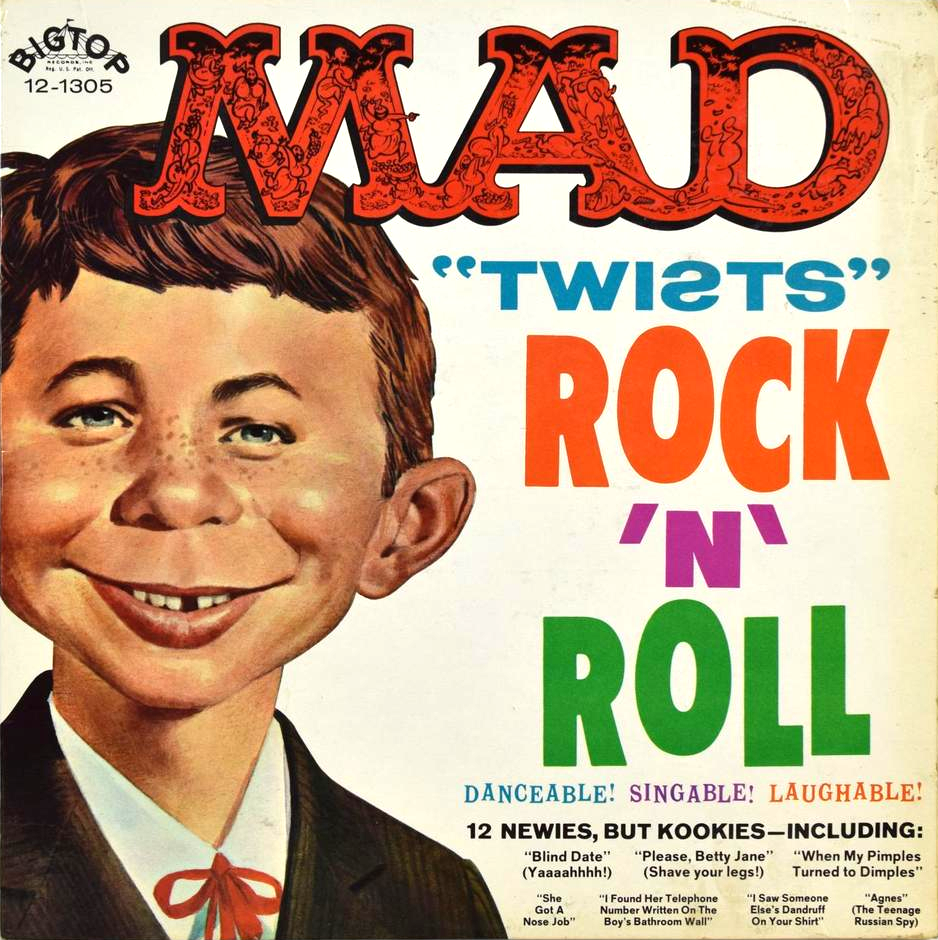
June 13, 2016
Mad Music
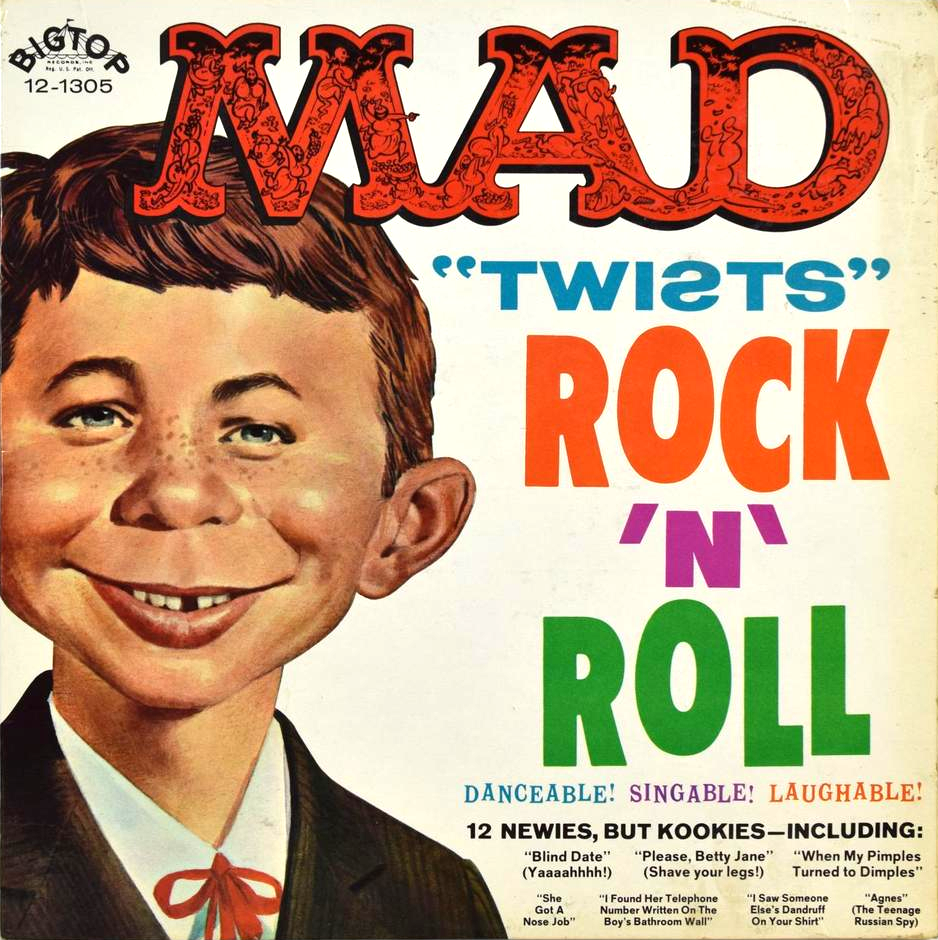
In 1962, I spent hours listening to Mad magazine’s first LP (Big Top Records), Mad “Twists” Rock ‘N’ Roll. Playing it over and over, I learned every inane lyric by heart. When My Pimples Turned to Dimples (That Say I Love You), Please Betty Jane (Shave Your Legs) and the existential (She’s Got A) Nose Job, with the refrain “now she’s the prettiest gal in town,” were imbedded in that part of my cortex that surprisingly even today is sent a twitter when I am idly waiting for take-out food or a prescription to be filled. (And if asked nicely I will gladly belt out each tune in two-part harmony.) So worn out was the vinyl of my first copy of Twists (it was the era of the twist), I bought two additional copies, which probably sent the record straight to #102 on the Billboard Charts (without the proverbial bullet).
The album was the first time a magazine crossed platforms (now a common occurrence), transmuting from art to music, and spawning such cultural treasures over a decade later as The National Lampoon’s Radio Dinner album and scores of other such multi-media productions. It made a lot of sense too: Mad’s sarcastic humor was as much about verbal as visual wit — and in the pre-Beatles sixties, rock n’ roll’s numerous clichés were ripe for parody. Making fun of the ever-popular “my baby died in a car crash” genre with (All I Have Left Is) My Johnny’s Hub Cap, and the “my baby was caught doing it with someone else” genre with Somebody Else’s Dandruff (On My Lover-Baby’s Shirt) or I Found Her Telephone Number Written On The Boys Bathroom Wall may sound puerile today but who knew from puerility back then. Humor was not over analyzed, it just occurred like a bodily function. Mad was the first slap at pop-commercial culture, which has been perfected in the 21st Century by the likes of John Stewart and Stephen Colbert.
This essay was originally published on June 8, 2009.
Observed
View all
Observed
By Steven Heller
Related Posts

Business
Kim Devall|Essays
The most disruptive thing a brand can do is be human
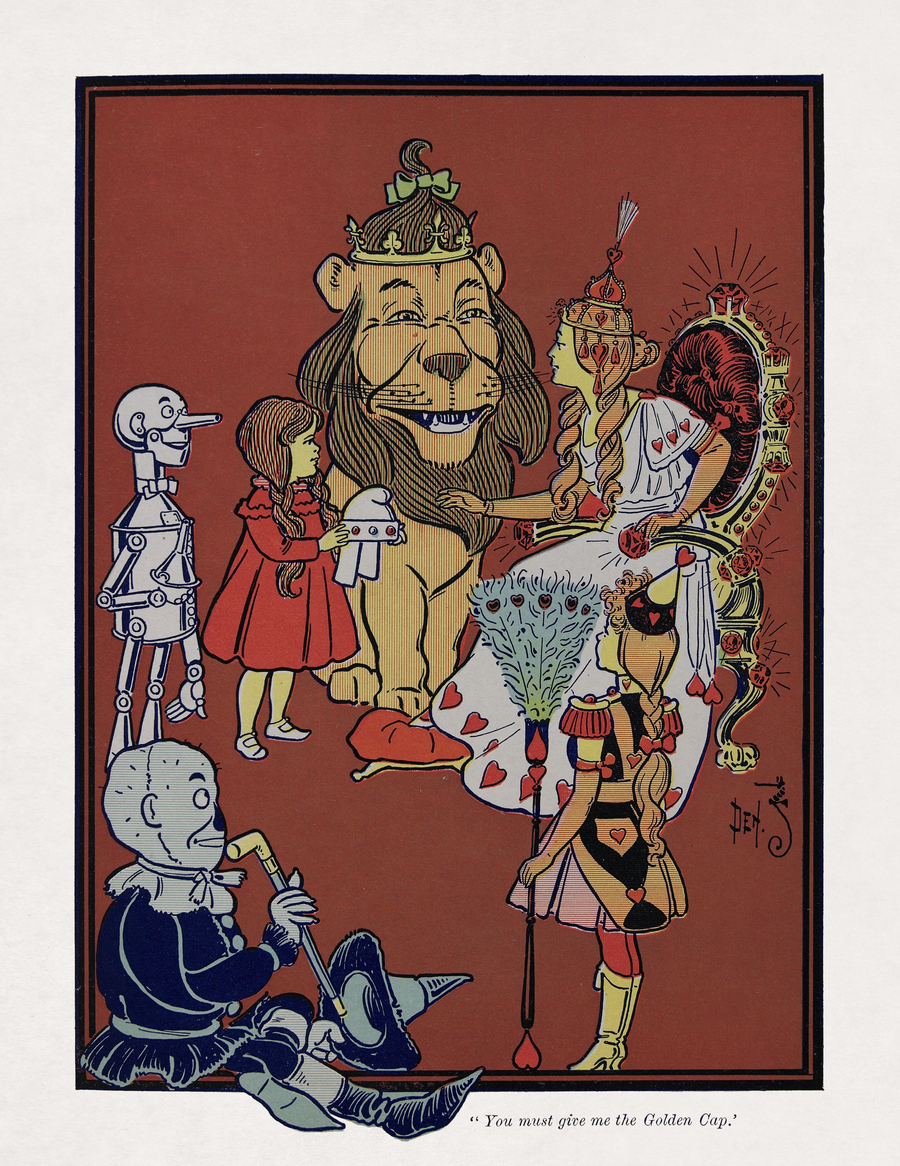
AI Observer
Lee Moreau|Critique
The Wizards of AI are sad and lonely men
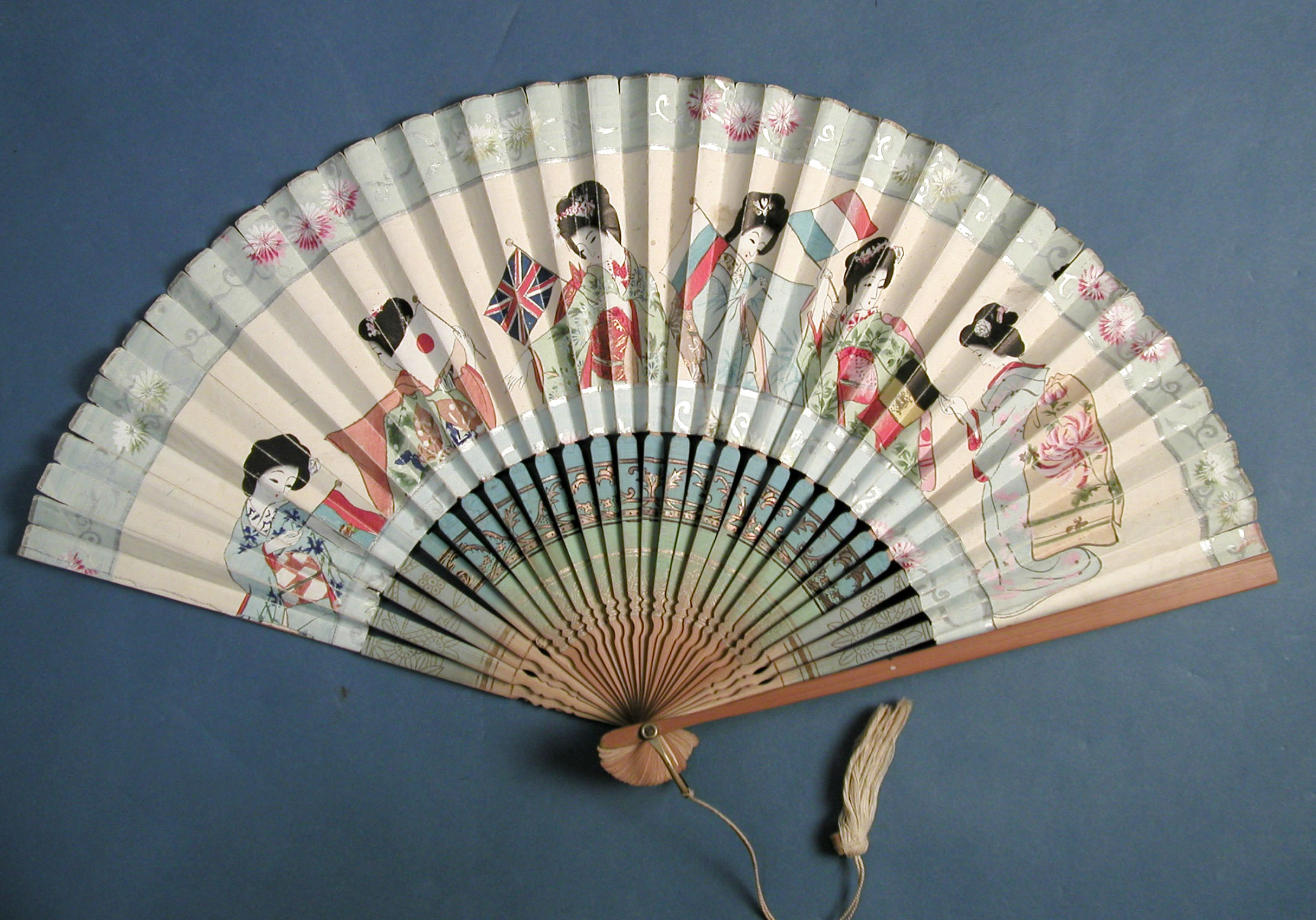
Business
Louisa Eunice|Essays
The afterlife of souvenirs: what survives between culture and commerce?
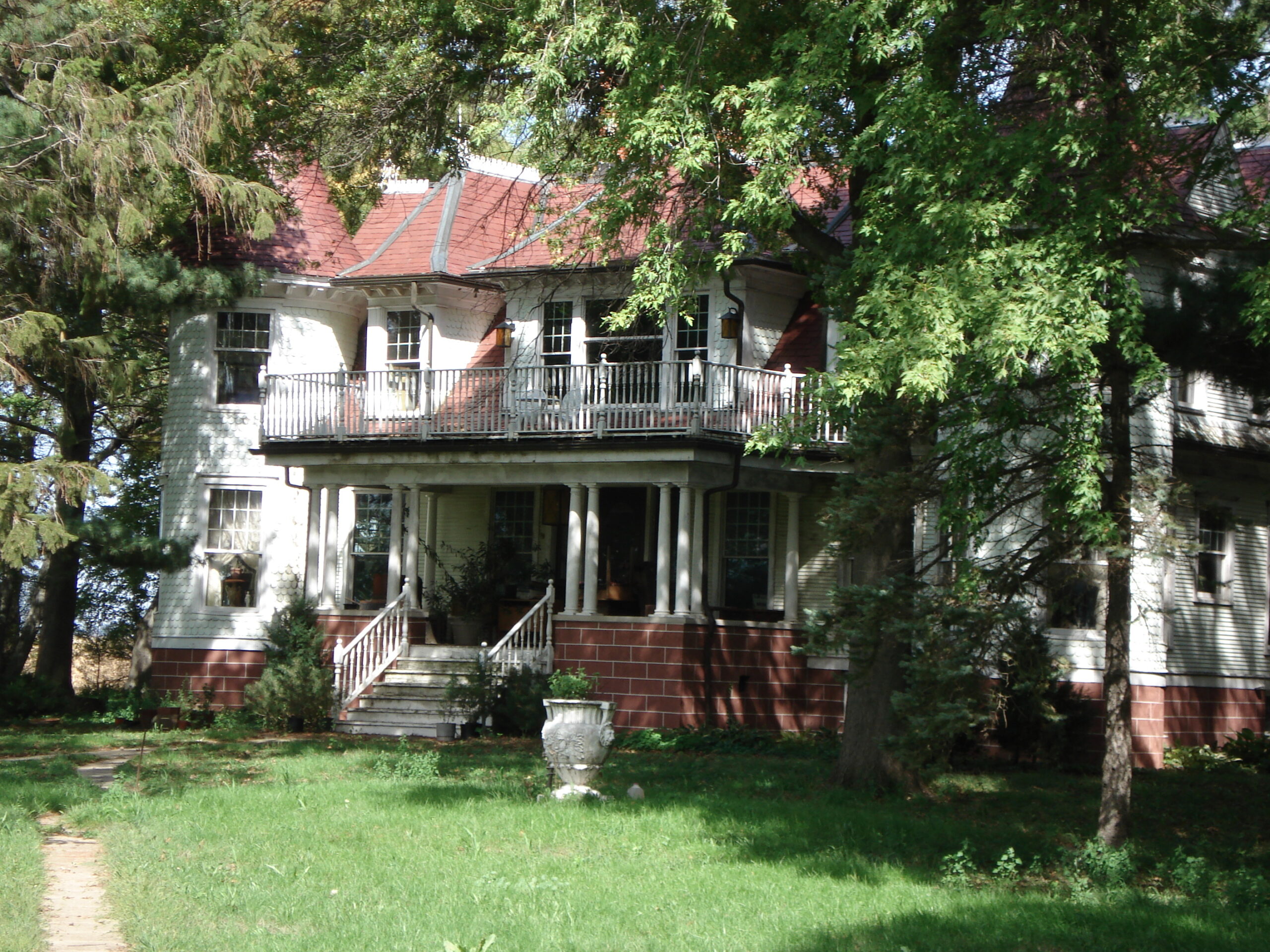
Architecture
Bruce Miller|Essays
A haunting on the prairie
Related Posts

Business
Kim Devall|Essays
The most disruptive thing a brand can do is be human

AI Observer
Lee Moreau|Critique
The Wizards of AI are sad and lonely men

Business
Louisa Eunice|Essays
The afterlife of souvenirs: what survives between culture and commerce?

Architecture
Bruce Miller|Essays

 Steven Heller is the co-chair (with Lita Talarico) of the School of Visual Arts MFA Design / Designer as Author + Entrepreneur program and the SVA Masters Workshop in Rome. He writes the Visuals column for the New York Times Book Review,
Steven Heller is the co-chair (with Lita Talarico) of the School of Visual Arts MFA Design / Designer as Author + Entrepreneur program and the SVA Masters Workshop in Rome. He writes the Visuals column for the New York Times Book Review,